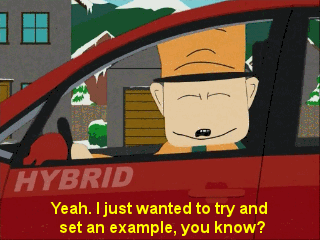October 14, 2015

One of the less obvious outcomes of the diesel Volkswagen Passenger Car scandal, is the stimulus Hybrid vehicles are receiving due to the drop in diesel trust. Volkswagen Auto Group (VW AG) was touting their diesels as the next generation of propulsion; clean, fun, and cheap. However, when it was discovered that they were cheating on their emissions tests they not only lost trust for the company, but for the fuel as a whole. Volkswagen may have done the environment a disservice initially, but the boost in popularity that hybrid vehicles is experiencing is unlikely to dissipate into the atmosphere like their NOx (Mononitrogen oxide (NO and NO2)) emissions. Actually, most of the diesel profits were going into new fully or partially electric powertrains across the German auto group. Many drivers did not realize, that while VW AG’s deceptive diesels were selling in surplus, their emphasis was on developing cross brand platforms with focus on fuel cells. Two companies under the VW AG umbrella knew this more than the rest. Porsche and Audi carried the rest of the team in terms of sales, however despite their soaring sales, they are not able to retool their autos at the rate they would like to. Still, Porsche is leading the VW AG in the right direction. Porsche has repeatedly boosted periodic reputations of hybrid vehicles. Ferdinand Porsche actually created and presented the first working hybrid automobile at the 1901 World’s Fair. 110 years later, his company debuts the first hybrid (intended for eventual production) hypercar. The 918 rebranded electric internal combustion combination powertrains. Unlike the LaFerrari, the 918 (to an extent the McLaren P1) are redefining the not only the hybrid, but the supercar as a category. The LaFerrari and the P1 are technical marvels with razor edge precision designed explicitly for terrorizing tracks. LaFerrari is not even interested in efficiency gains. The P1 is, but again in a limited sense. In that vein, the P1 the 918 are trying to save the dying supercar industry, by making their models more environmentally friendly. The 918 took it one step further, it is more than a hypercar, it is practical. It could feasibly be used as a daily driver… maybe. In a far more pragmatic exercise, Porsche released the a plug-in hybrid version of the Cayenne. It is the first in what will be a booming market. The automotive industry will soon be flooded with energy efficient and space abundant transportation. The Cayenne is important, because it is one of few hybrid vehicles that do not bring attention to itself, it does not ‘look’ like a hybrid (see Prius). This inherent need to tell the world this car is a hybrid needs to stop. Sure some people only find pleasure in doing things for the praise, but the vaster portion of society wants to drive a hybrid without looking like this. Porsche also has a full electric automobile slated to start sticking it to the Tesla Model S soon (not the Mission E, but similar). For now, fans will have to be satisfied the boost in efficiency their other plug-in hybrid vehicle (the plug-in Hybrid Panamera) accomplishes. Though one does not have to appreciate the aesthetics of that abomination… it is not a pretty Porsche. Though the upcoming plug-in hybrid Macan will be, provocative enough for the both of them.
Tags: Hybrid Vehicles , Porsche
Hello {{User.FirstName}} {{User.LastName}}.
You are logged in with email {{User.Email}}.